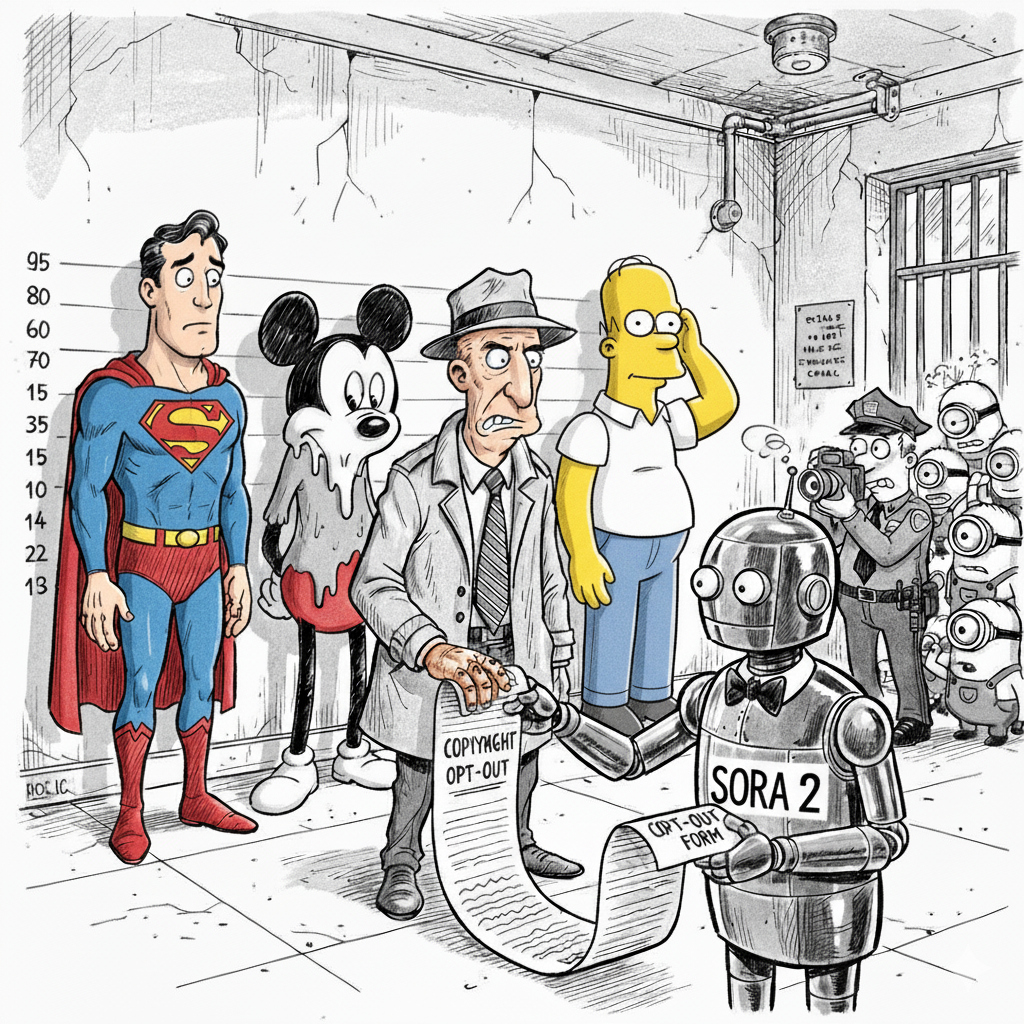Sora 2 Is Released
OpenAI's Sora 2, an advanced text-to-video AI with a new social app, aims to rival TikTok with powerful creative tools.
OpenAI announced a major strategic shift on September 30, 2025, with the simultaneous release of Sora 2, an advanced version of its text-to-video AI, and a companion social media platform called "Sora". This coordinated launch marks the company's transition from being a B2B technology supplier to becoming a direct-to-consumer platform, positioning it to compete with services like TikTok, YouTube, and Meta. The initial rollout of the Sora application is a limited, invite-only beta for iOS users in the U.S. and Canada, a method intended to control expansion and generate demand through exclusivity. The app is available for free, though subscribers of ChatGPT Plus and Pro get priority web access to the higher-tier "Sora 2 Pro" model. Beyond being a consumer product, the Sora application serves as an advanced mechanism for data collection. Each user engagement generates valuable, proprietary information that feeds into a powerful cycle for training subsequent AI models, thereby strengthening OpenAI's market position.
Sora 2 features several groundbreaking technical capabilities. Its most notable advancement is the inherent capability to produce synchronized audio, encompassing dialogue, sound effects, and music, all from a single text input. This integration simplifies the creation workflow by removing the requirement for separate audio editing. The model also features a more sophisticated grasp of real-world physics. Unlike earlier models that might generate physically impossible scenes, Sora 2 renders realistic outcomes, such as a basketball correctly bouncing off a backboard after a missed shot. This improved realism helps bridge the "uncanny valley" often associated with AI-generated content. Additionally, creators have greater control, with the ability to issue complex, multi-shot commands that maintain character and stylistic consistency. The model produces video up to 1080p, with clip durations varying by access tier. These improvements suggest the development of a foundational "world model," advancing OpenAI's long-term goal of achieving Artificial General Intelligence (AGI).
The Sora app is a deliberate social experiment, highlighted by its "Cameos" feature, which lets users securely insert a verified digital version of their face and voice into AI-generated videos. This tool is designed to foster personalization and viral sharing while giving users full control over their digital likeness, addressing concerns about deepfakes. A "Remix" function encourages collaborative content creation, similar to features on other short-form video platforms. OpenAI also promotes an "anti-addiction" philosophy, with the app designed to prioritize creation over passive consumption through features like creation nudges and a customizable feed. Monetization will initially be based on charging for extra computational power during peak usage rather than on advertising.
Despite its innovations, Sora 2's release is accompanied by significant ethical and legal questions. A primary source of contention is the platform's "opt-out" approach to copyrighted works, which allows the model to generate content with protected intellectual property unless the owner identifies and reports each individual use. This policy, which has drawn backlash from creative industries and led studios like Disney to block their content, contrasts sharply with the strict "opt-in" requirement for using a person's likeness in Cameos. The model's high degree of realism also elevates the risk of convincing deepfakes and misinformation. Although OpenAI has put safety protocols like watermarking in place, the potential for misuse is a significant concern. There is also apprehension that the platform could become saturated with low-effort, derivative "AI slop," potentially devaluing human-made content.
Sora 2 enters a highly competitive arena, challenging not only social media platforms like TikTok and YouTube, which are developing their own AI video features, but also specialized AI model creators such as Google, Runway, and Pika Labs. The technology is poised to have a transformative effect on creative fields. Sora 2 provides powerful new instruments that could reshape workflows in film, advertising, and gaming, but it also presents a considerable risk to employment within these industries. Reports already suggest that AI adoption has led to job reductions in Hollywood, a trend Sora 2 could intensify. The platform's ultimate success will hinge on its ability to address complex regulatory issues, maintain a sustainable business model, and establish its value in a quickly changing digital environment.
